What is Creative Writing Class? An Introduction for Kids
What is Creative Writing Class? An Introduction for Kids
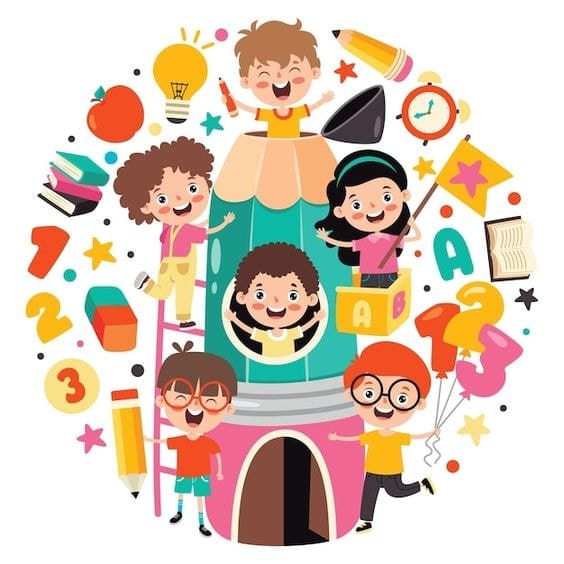
Creative writing is a type of writing where you use your imagination to tell a story. Instead of writing about real things like in a textbook, you can create your characters, worlds, and exciting events. It’s like making up stories or poems that can be funny, sad, adventurous, or magical. You can write about anything you want—superheroes, animals, or even something completely imaginary, like flying cars or talking trees!
Creative writing skills are essential because they help you grow your imagination and storytelling skills. Students learn to express their thoughts and ideas in fun ways when writing stories. It also makes reading and writing more enjoyable, turning simple words into adventures. Creative writing classes for kids can improve vocabulary and help you become a better communicator. So, whether it’s writing short stories, poems, or even scripts for plays, creative writing is a fun way to share ideas and your creativity with the world!
Indeed, it is an effective way to polish communication skills.
What’s Included in Codeyoung's Creative Writing Class for Kids?
Codeyoung's Creative Writing Classes for Kids is a well-thought-out approach to nurturing the creativity of the young generation and developing writing. The curriculum has been so cleverly designed that writing can be enjoyed for foundational solid skills. Each writing class has unique aspects like storytelling, character building, plot structuring, and a great use of descriptive language and poetic forms and techniques. This is made possible through a balanced blend of direction instruction and self-learning so the child will learn the various formats and writing techniques, all piling up gradually.
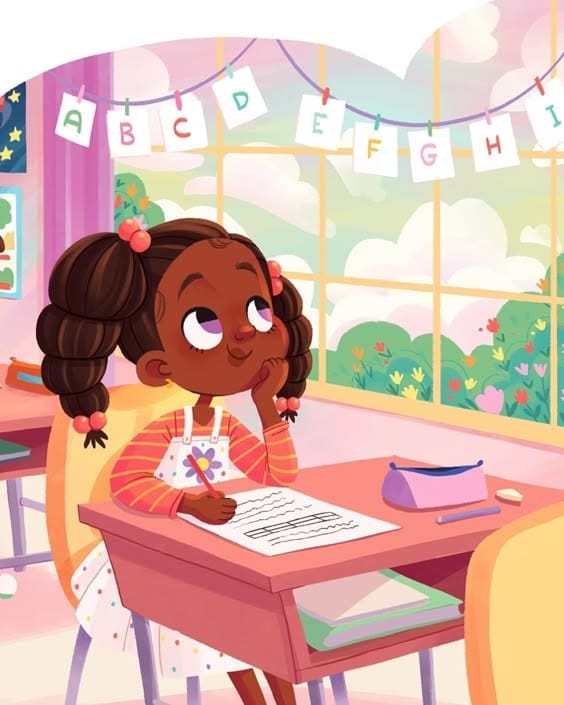
This being one of the bases, the course reflects on the age range and the associated variations as the syllabus is aptly planned. To a younger child or a beginner, it is about confidence in expressing ideas and knowing what a simple story structure looks like. To the older kids or more advanced writers, ideas such as writing dialogue, appealing plots, character development and literary devices such as metaphors and similes are stretched. Codeyoung ensures that all the students are challenged at just the right level as they grow up to be influential writers at their own pace due to the customized material used in the course. It enhances students' writing experience and gives them an edge compared to other students and fellow writers.
The introductory classes and writing workshops of Codeyoung are a combination of interactive exercises, writing prompts, and constant feedback from an expert mentor, which is code unique. Not only this, but we also offer poetry and online creative writing classes. This lets the children engage in the discussion of ideas through exercises, thereby enhancing creativity. Fiction writing workshops help generate imagination and push through blocks for the student. Timing and constructive feedback from experienced mentorship are required; this focuses on the areas of improvement but celebrates each child's unique voice and style. This makes kids more confident and creative about their writing.
What is Creative Writing, and What are the Different Types of Creative Writing?
Creative Writing: Definition and Role in Self-Expression
Technical writing seeks clarity in communication and efficient transfer of information, while creative writing focuses on originality, voice, and emotional expression. Creative writing disregards the traditional forms, going further to get writers to develop more personal and artistic ways of creating stories. Creative writing aims not merely to inform one's audience but to provoke one towards some form of reaction, be it to think, feel, or imagine things differently.
Creative writing skills, in the simplest sense, is about self-expression. It represents the way the thoughts of writers against their feelings and experiences result in clarity and even healing for the author. Some view creative writing skills as an outlet for their emotions, while others use it to tell fictional stories reflecting somewhat their worldviews or aspirations. No matter the media, though, the creative writing skills and techniques bring freedom to any topic or theme and thus provide an exceptional space where imagination can thrive, making them compete with the other writers and students.
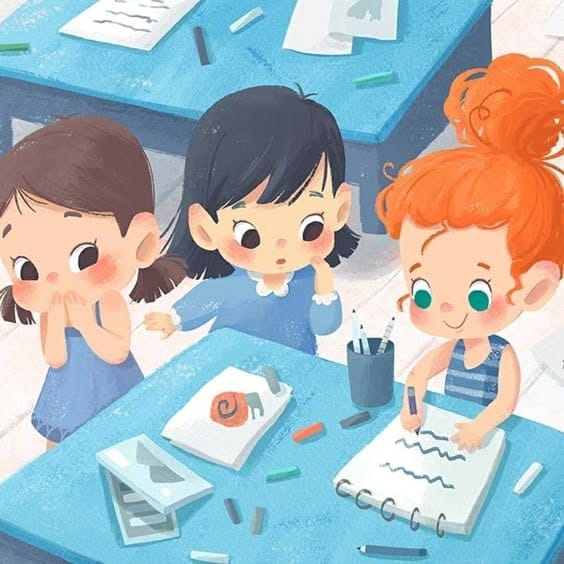
Creative writing takes different forms, of course, and with each form comes different skills and means of expression and communication. Below, then, are some of the major forms of creative writing; each has a specific technique and purpose.
1. Fiction (Short Stories, Novels)
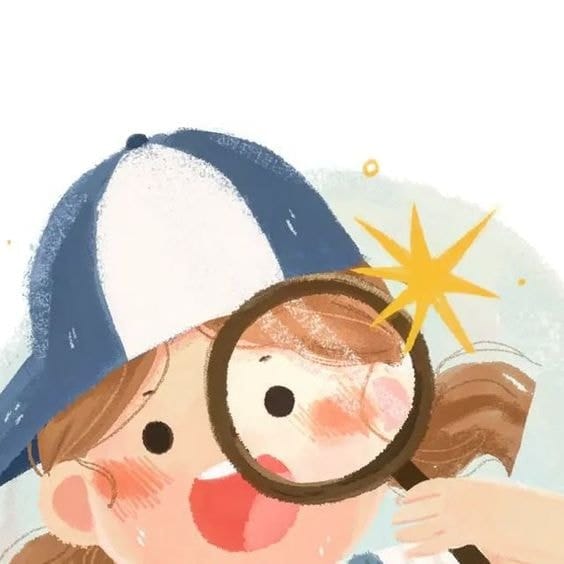
Fiction is one of the most popular and known forms of creative writing. It entails imagining characters, settings, and events to narrate a story. Fiction may start with stories that involve a short event or idea and progress to novels involving a complex plot, multiple characters, and developments over a long time. Fiction is not only related to imagination; it has gone beyond the conventional approach. Codeyoung ensures that students learn the craft of framing science fiction as well.
Short stories
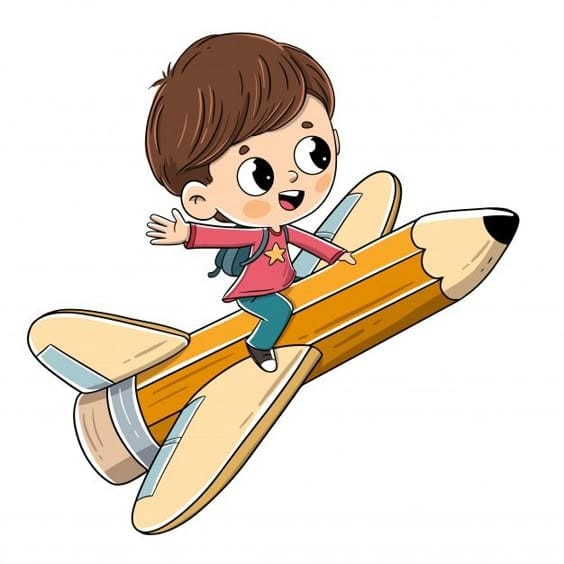
Short stories are fictional works ranging from a few hundred to a few thousand words. Traditionally, they explore and concentrate on a specific event or moment, producing character-oriented and emotionally meaningful literature.
Novels
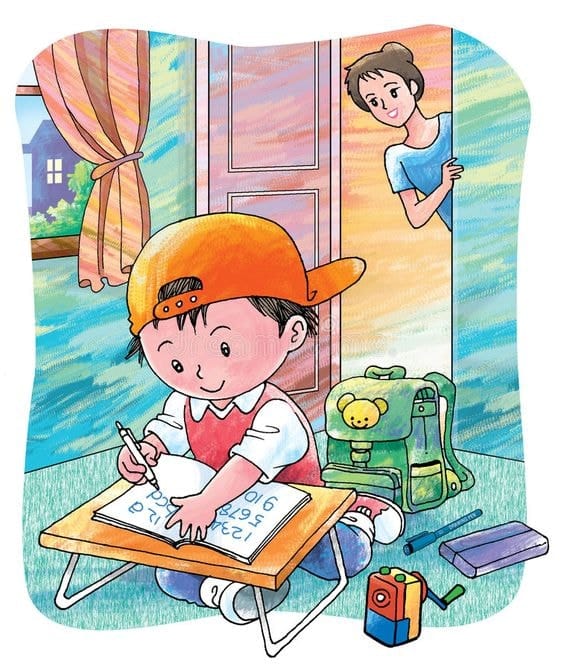
Novels are long fictional works that may include intricate plots, richly described characters, and multiple subplots. They can be used to explore themes, conflicts, or human experiences more significantly.
2. Non-fiction (Memoirs, Personal Essays)
Nonfiction writing is, by strict definition, derived from real events, but quite a lot of creativity is involved. The writing is derived from personal knowledge, experience, or events that the writer witnessed.
Memoirs
A memoir is a personal narration in which the writer recounts experiences in his or her life. Unlike autobiographies that run throughout a whole life, memoirs focus on aspects of moments, relationships, or themes that allow the writer to examine issues of personal and emotional growth. Writing classes are like another part of teaching, where the verbal basics of a student are enhanced, which is not taught in school.
Personal essays
Personal essays are short, nonfiction compositions about the writer's thoughts or experiences on a given topic. They are a mix of narration and reflection, often having only one lesson or insight.
3. Poetry
Poetry is an extremely expressive art form that uses language in condensed, imaginative ways to elicit emotion, paint pictures, or explain abstractions. It can take on any shape and form, from the traditional sonnets and haikus to a much freer form. For example, rhythm and rhyme are used in poetry to explore language and distil complex emotions into powerful, often lyrical, expressions.
Structured poetry
This is written in specific patterns concerning meter, rhyme scheme, and so on, like sonnets, villanelles, and haikus.
Within free verse, there is no adherence to traditional poetic rules. Free verse rejects this idea. It allows the poet freedom in writing without particular rhyme or meter but to rely instead on rhythm, choice of words, and images.
4. Scriptwriting (Plays, Screenwriting)
Scriptwriting is writing a script for a performance on stage or screen. Unlike prose or poetry, scripts are based on an intention to be played out, hence include dialogue, character actions, and descriptions of what should be happening on the scene.
Plays: Playwriting is the art and craft of constructing scripts for a live performance. Almost always, plays consist of dialogue and stage directions and mainly concentrate on character development and conflict. The playwright must consider how the story will be realized through actors, sets, and staging.
Screenwriting: As a form of playwriting for screens or televisions, screenwriting is an art that composes a story of the writer's vision and hearing. The writer writes only the dialogue, action, and camera directions. Scripts are very structured; they usually adhere to industry standards regarding format and style.
5. Journaling
Journaling is personal, expressive writing in which thoughts, feelings, and experiences are recorded day by day. Most forms of creative writing are meant to be shared, while journaling is not; it is a private means of reflection and exploration. However, journalists may share or come together in other compositions, like memoirs or essays, by choice of the writer.
- Reflective journaling: The writer uses reflective journaling to explore thoughts, feelings, and reactions to events.
Creative journaling: For some writers, journaling is a space to brainstorm ideas, write potential storylines, or play with words and imagery.
Key Elements That Make Up a Creative Writing Class for Kids More Engaging
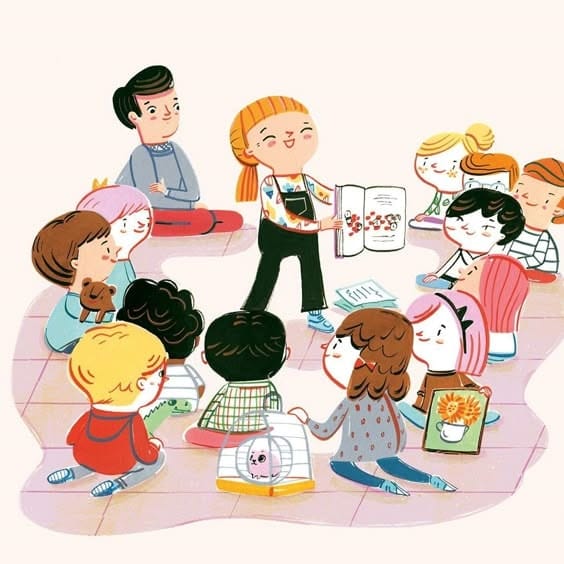
1. Encouraging Creativity and Free Thinking
One of the things that stimulates a creative writing class for children is creating an environment that encourages creativity and free thinking. Children need the freedom to operate in areas that let their imaginations run wild without fearing judgment. Teachers provide this when encouraging kids to write freely, creating individualistic stories, characters, and worlds. Such an open-ended approach takes fun from an activity and a child's confidence in his or her creativity. When kids can think out of the box, they tend to love writing much more beyond the class.
2. Providing a Non-Threatening Environment for Idea Generation
A creative writing and poetry class only prospers when kids can feel safe and share their thoughts and ideas. Children must have a safe, supportive environment to voice their creative expressions. In this way, the students are encouraged to allow each other, to say the least, a polished version of the incomplete story, for peer collaboration is brought into play, and a feeling of community in the class is fostered. When other students understand that their writing will be respected and cherished, children will be willing to take more creative risks and become better writers.
3. Creative Fun Through Activities
A lively, engaging curriculum gives online creative writing classes an exciting feel and flair for children. Such activities can include group storytelling, where children collectively create a story by chipping in with parts of the story. Another fun activity is the picture prompts, through which the children can begin to conceive their imagination as ideas visualized for a story. These activities excite and engage the kids in writing, where they are called upon to participate in exercises that challenge critical thinking while promoting teamwork. Using many hands-on, dynamic exercises enables students to approach writing in a playful, adventurous sense rather than treating it as a chore.
4. Providing Personalized Feedback to Foster Their Growth
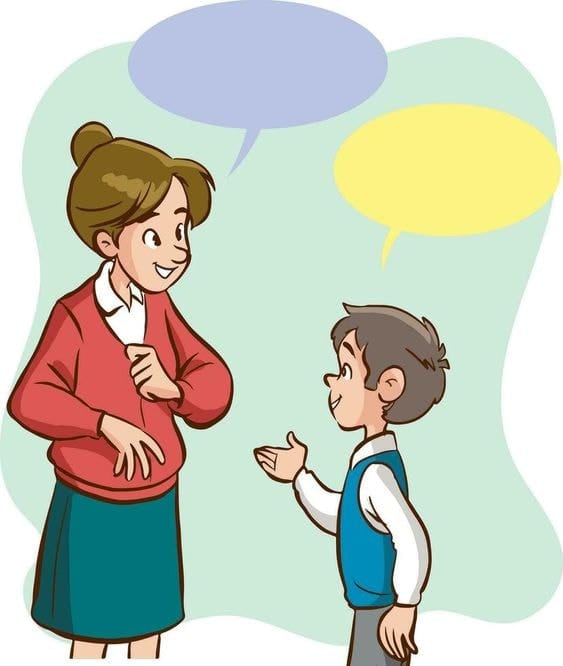
Only personalized feedback can grow and build confidence in the child's writing abilities. Instead of general criticisms, a teacher or mentor in a creative writing class or online courses should give individualized critiques that develop a student's strengths while suggesting growth. Carefully giving constructive feedback helps kids understand how to refine their ideas and structure their writing effectively. They are also driven to master the skills because they feel appreciated. Personalized teaching and coaching help develop skill sets and a positive attitude toward writing for every child in the creative journey.
Activities That Enhance Learning in Creative Writing Classes
1. Writing Prompts and Challenges: Writing prompts and challenges are just one of the most fun ways to encourage your little one's creativity and interest in writing. Prompts range from very simple - "Write about a magical adventure"-to particular scenarios, such as "Describe a day in the life of an animal that talks." All these activities give children a foothold and help them surmount the initial hurdle of thinking of what to write. Like timed writing exercises, challenges add a playfully competitive, urgent feel and require kids to think fast and creatively. These prompts help steer the fresh, imaginative ideas teachers seek but still allow kids the latitude to take a story where they want it to go.
2. Group Storytelling Sessions: Interactive group storytelling also combines creative writing to improve teamwork and children's communication skills. While doing a group storytelling session, every student gives a sentence or paragraph to add to the collective story. It facilitates the children to listen to each other, new ideas develop, and what peers create is built upon. This makes it a great play activity for children because, to win a competition, you would have to think on the spot for a more creative, coherent continuity of the writing started for the short story part. Also, each change of direction that could take the story drastically anywhere keeps kids interested and excited about what will happen next in the narrative. Students thinking about creating stories at the last minute increases their craft of words and language.
3. Creative Journaling Exercises: Journaling is a quiet reflection that is particularly useful for younger writers. In creative writing, the journaling exercises allow children to think about their ideas and feelings clearly without having forms or judgment. Teachers can even challenge the students to develop ideas for daily or weekly journaling - such as "describe your dream vacation" or "write about a time you felt happy." This can facilitate better expression. Creative journaling also allows kids to experiment with their writing styles and explore new ideas. Over time, they work on building distinctive voices, gaining confidence in their ability to put into words the inner world that is their own.
4. Peer reviews and constructive criticism: A peer review session can be rich in opportunities because students will have plenty of chances to engage with each other's work meaningfully. Students share a personal story or essay written at their desks or in small groups, providing feedback to classmates. Again, the twist is to help them learn how to give and take constructive criticism-positive reinforcement balanced with feasible suggestions for areas of improvement in a kind and respectful manner. Peer reviewing helps the student learn to critically evaluate writing and see strengths in someone else's work, then perhaps be more open to being given feedback. This method also establishes a sense of class because children fully support one another's development as writers. The process facilitates more cooperation among children and makes them more thoughtful about their writing.
5. Theme Writing Activities (Holiday, Seasonal or Event-Based Themes): Themed creative writing courses and activities are often centered around holiday, seasonal, or event-based themes, adding another fun and relevant layer to school creative writing classes for kids. Some examples for fall include writing spooking Halloween stories or composing tales about autumn adventures. They can bring themes about environmental concerns through special events such as Earth Day or write stories about nature and how it is being taken care of. This kind of activity on different themes helps link writing to real life in an inspiring way for the students to seek inspiration in their surroundings.
This relates makes the creative process more tangible and interesting for kids, enabling them to join enthusiastically.
The creative writing classes make the learning process both engaging, fun, and educational for the kids through different interactive activities. These creative writing classes and workshops were prompts of imagination, the group storytelling that eventually led to collaboration, and many more developed their key writing skills. Creative journaling gives students the freedom to pour themselves out authentically while constructive peer reviews teach the value of such feedback. Themed exercises are lively, and their nature links writing to actual life events. More than just fun games, themed classes and exercises train students to love creative expression for life.
Learn Creative Writing at Codeyoung

Creative writing is a versatile and mighty tool of self-expression. Individuals use it to engage in experiences from real and imagined worlds in their mother tongue. Creative writing classes for kids at Codeyoung can be customized according to the time a student devotes in a week. The courses are specially designed with a curriculum that includes literary devices and writing techniques.
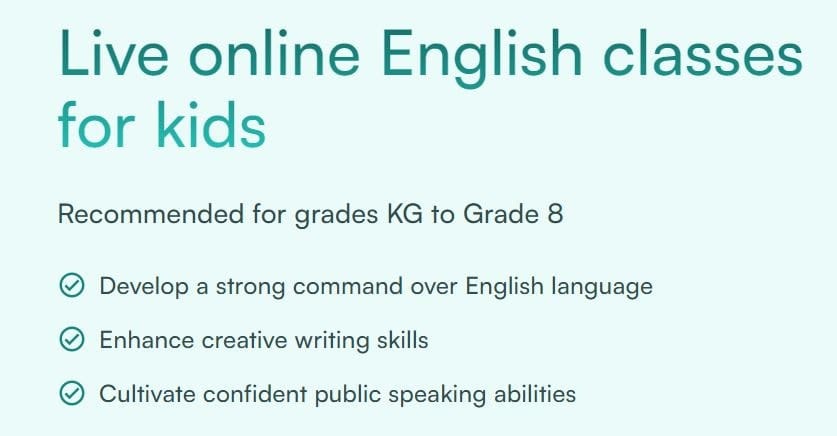
Creative writing, whether fiction, nonfiction, poetry, scriptwriting, or journaling, connects writers with readers personally and emotionally. The different types of creative writing present varied challenges and rewards, so it becomes an exciting and fulfilling activity for writers of every background and interest. Among various creative writing expressions, it is undoubtedly one of the most effective means of expressing unique perspectives, leaving long-lasting impressions on others.
FAQs
1. What are the benefits of creative writing classes for kids?
Codeyoung offers children several advantages relating to its creative writing classes. The courses inspire children to be imaginative and out of the box, thereby creatively enhancing their ways of thinking through unique, different stories. Writing helps kids learn how to express themselves since, in the process, they train themselves on how to put thoughts and feelings into an orderly manner. Creative writing teaches children problem-solving skills because, during these classes, kids devise plots and characters, teaching them how to creatively solve more severe conflicts in life. Altogether, these courses nurture a child's ability to think for himself and give him confidence regarding his ideas because they are sound. Learning will be enjoyed but learned.
2. How can a creative writing class enhance a child's storytelling skills?
Here are 10 advantages of doing creative writing from Codeyoung, most particularly in the area of developing a child's storytelling skills:
1. Structured Storytelling: It allows guided activities that can teach children how to organically organize their thoughts into well-structured stories.
2. Improved Narrative Flow: Kids learn how to connect ideas into structured stories, improving their ability to make coherent and engaging stories.
3. Character Development: These lessons enable the children to develop more realistic and three-dimensional characters, thus enhancing their storytelling.
4. Plot Development: Instruct the development of more interesting plots with well-defined beginning, middle, and ending that constitute a story arc.
5. Creative Freedom: It actually encourages kids to think imaginatively, which can lead to creativity as kids experiment with different ideas and elements when composing a story.
6. Vast Vocabulary: Writing regularly extends a child's vocabulary and enables him to present complex thoughts lucidly.
7. Problem Solving: Children learn to solve conflicts in their own stories, which increases their real-life problem-solving skills.
8. Confidence Building: Completing stories gives kids a sense of achievement and confidence-building in their creative ability.
9. Constructive Feedback: the children receive concrete, personal feedback to perfect their telling and writing.
10. Public Speaking: Telling their stories enables children to strengthen their oral narration and communication skills, which are crucial for public speaking.
3. What is typically covered in a creative writing class for kids?
Here are ten essential themes that the creative writing class for kids at Codeyoung would cover.
1. Character building: Students will learn to design different characters with personalities, basic backgrounds, and reasons for their actions.
2. Plot development: Students will be guided through the process of developing interesting plots with clear beginnings, climaxes, and resolutions.
3. Setting development: Kids will learn to dream up vivid and imaginative settings for their stories.
4. Dialogue Writing: They write dialogues with all the elements of real talk between characters yet continue to carry on the plot.
5. Story Structure: The children can thus organize the different pieces of the jigsaw together into a sensible, coherent, and logical structure for a good story.
6. Creative Techniques in Writing: Metaphors, similes, and imagery are creative devices used to explain and convey the story.
7. Point of View: Various narrative points of view, including first and third person, will help the student practice writing in different forms of narration.
8. Conflict Resolution: Students are taught how to introduce and resolve conflict in their stories, thereby creating an interesting storyline.
9. Prompts for Writing: Kids are issued with prompts to help trigger creative writing and gain experience in writing in different genres, such as fantasy, adventure, and mystery.
10. Editing and Revising: The course would stress how to put writing in the correct shape by re-writing and revising the writing, thus teaching them to become editors.
4. How do creative writing classes for kids contribute to developing critical thinking?
Creative writing classes teach children to analyze and interpret various situations within the stories critically, thus enabling them to develop critical thinking skills. By building characters, producing plots, and creating resolutions to conflicts, they know cause and effect, consequences, and motives in a much deeper way to evaluate any scenario from more than one angle.
Creative writing encourages out-of-the-box thinking, leading kids to come up with unique solutions to many challenges that their characters face. It also nurtures problem-solving skills since kids get to browse imaginative possibilities and test approaches that would seem creative in real-life situations.
5. What is creative writing, and how can kids get started?
1. What is Creative Writing? It is the art of how to express ideas, stories, or any emotion in imaginative writing.
2. Start with Journaling: Try to encourage your kids to keep a daily journal in which they write down whatever happens in their minds and experiences in life.
3. Use Writing Prompts: This prompt sparks creativity and gives kids a fun beginning to a story.
4. Read Often: Reading books expands vocabulary and introduces kids to many different story-writing styles.
5. Set Small Goals: Take stories or poems, which will enable the children not to get discouraged with something too long.
6. Create Characters: Ask them to create characters by doing work with qualities, personalities, and motivations of characters
7. Write About Personal Interests: Ask them to tell stories about hobbies, favourite books or activities
8. Use Visual Inspiration: Images, drawings, or photos can be very effective sources of inspiration for bringing settings and plot ideas alive.
9. Join a Writing Community: As was the case with Codeyoung's creative writing classes, ensure that you join groups to develop your skills in an environment that fosters growth, otherwise referred to as the communities in which you write.
10. Practice regularly.: Writing often will increase confidence and storyteller abilities over time.
6. In what ways do creative writing classes improve a child's vocabulary and language skills?
Creative writing lessons are part of vocabulary development and the mastery of language skills among children. Writing sessions daily will encourage the learning of many new words diverse by which vocabulary gets expanded. When children write essays, poems, or stories, they unconsciously seek more vivid or accurate words to describe their intentions, which makes them eager to find new words. The teacher can also introduce lists of words and encourage the children to use synonyms and antonyms, which are gradually expanded within their linguistic repertoire. Such regular exposure eventually results in a more comprehensive vocabulary, which they apply to their writing and speaking skills.
Besides enrichment through vocabulary, creative writing courses will improve their grammar and sentence construction. As they write, the students learn to construct sentences differently, experimenting with sentence length, punctuation, and word order. Through practice and feedback, they understand how to form coherent sentences and use proper grammar more naturally. In creative writing courses, teachers may focus much on clarity and flow, which entails telling students to construct paragraphs that have well-structured sentences to communicate their ideas. This constant attention towards sentence formation results in noticeable development in their language use altogether.
7. What role do creative writing classes play in boosting a child's confidence?
Creative writing classes play a huge part in making a child confident. They can provide a nurturing environment where ideas and creativity would be valued. Positive reinforcement from instructors makes the children take pride in their work and encourages them to improve further. When children feel appreciated in presenting their stories, poems, or essays, they are motivated to say much more. The best part is that it builds self-confidence because they can explore their imagination without any fear of judgment to be afraid of.
Another thing is peer and teacher feedback, which contributes significantly to any child's confidence. Normally, in a creative writing classroom, the pupils share their work with the teacher and classmates. This way, constructive criticism will be forwarded, but all of this will be done in a friendly and respectful manner. This will educate them to receive feedback and show them that their writing has meaning for themselves and others. They will have the chance to be influential writers who believe in themselves if they understand they can appropriately and effectively communicate ideas and that their work speaks to others. Self-expression, peer recognition, and teacher support all build a sense of assurance that reaches beyond writing, helping to inspire them to become more confident communicators in the outside world.